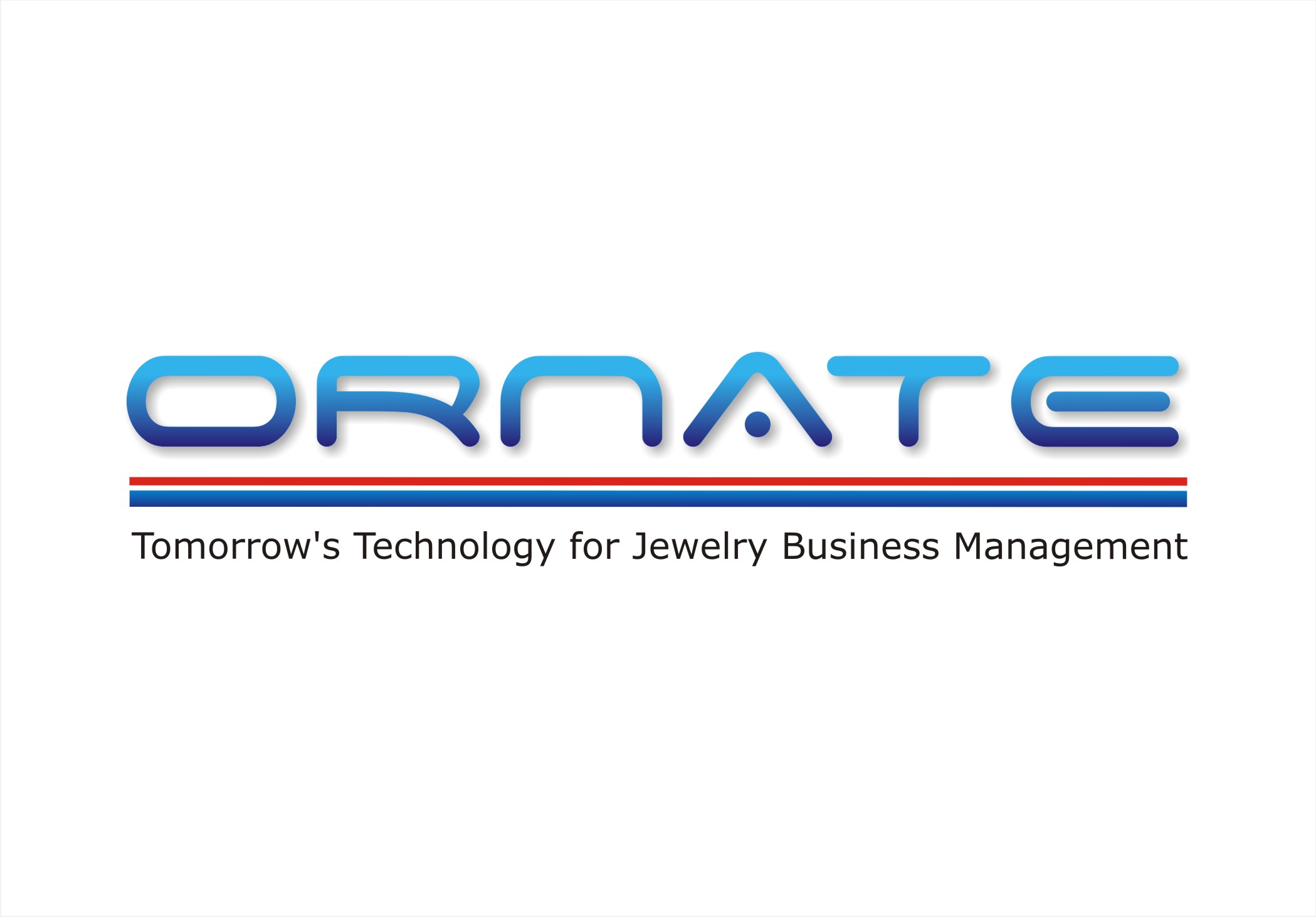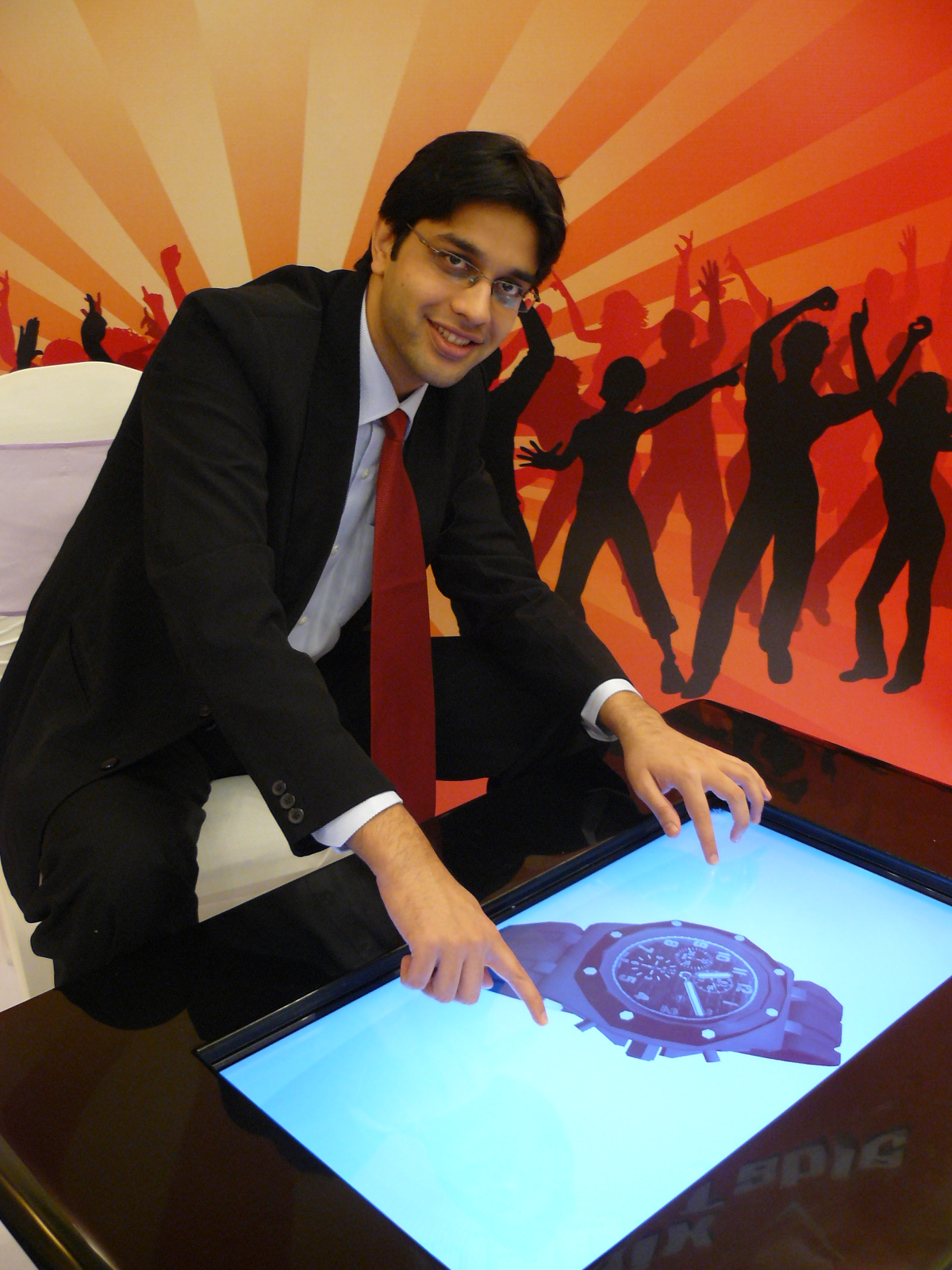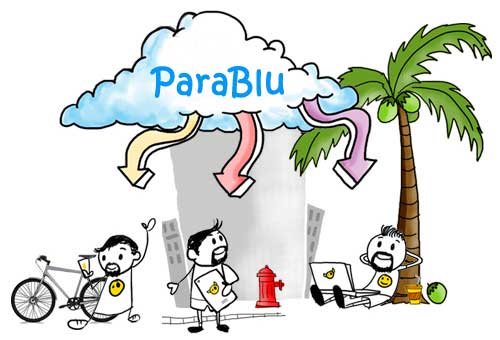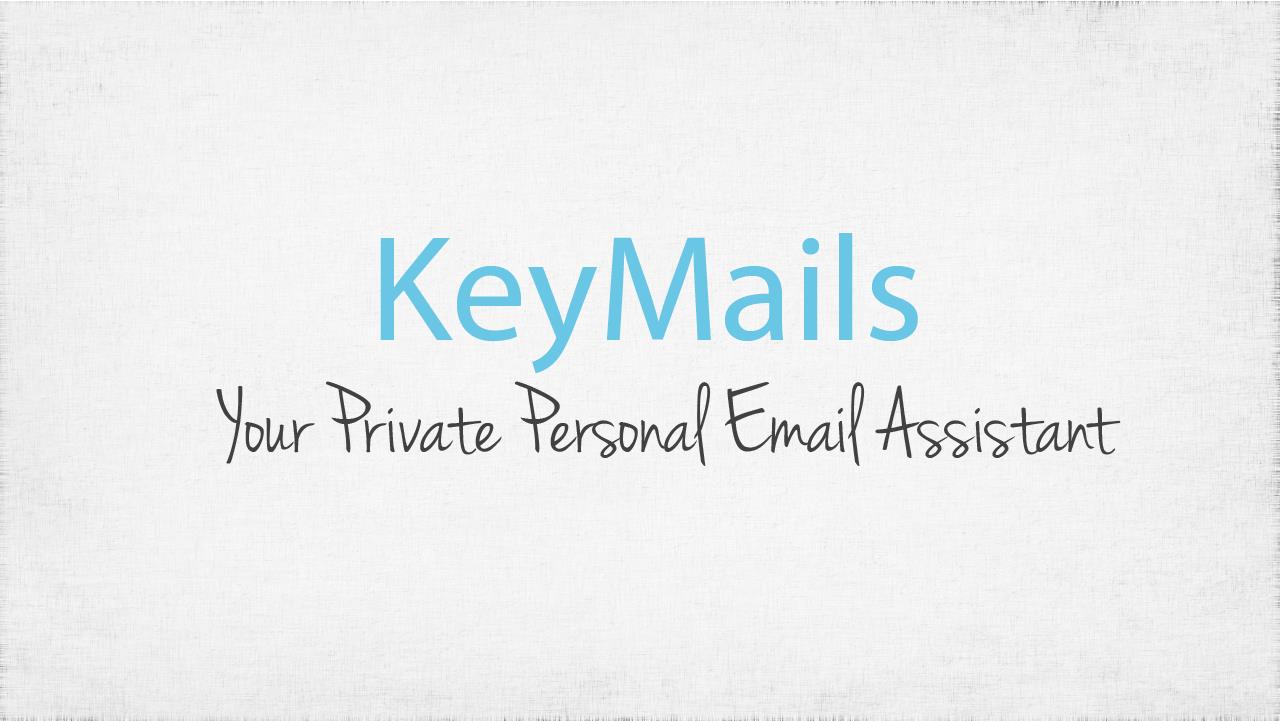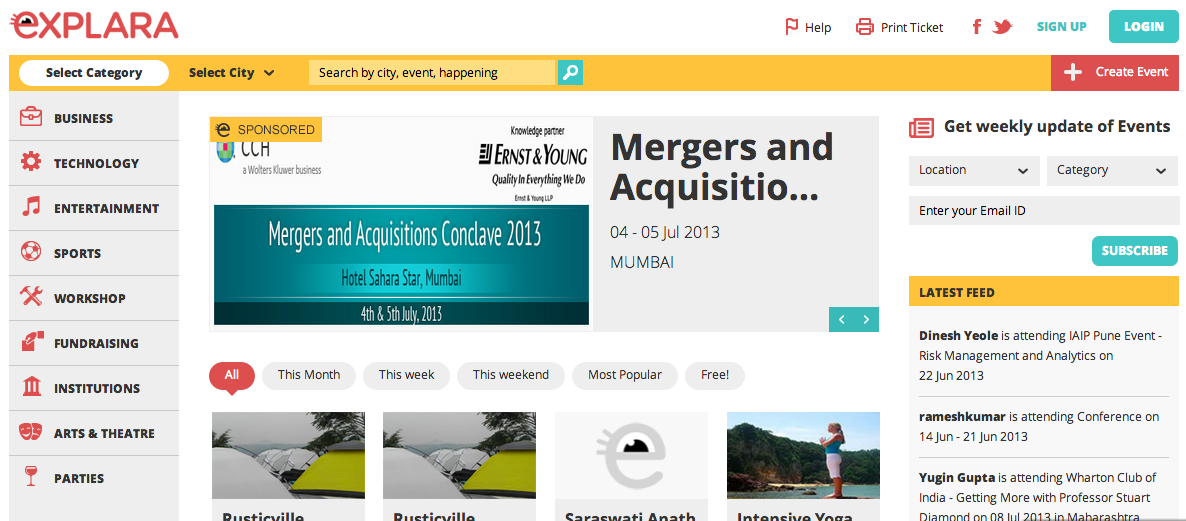A mentor and guide to many, Ram Shriram, managing partner at Sherpalo Ventures and one of the first investors at Google, addressed a rapt audience last week at the Bangalore office of [24]7. Opening the hour long session with his reaction to the start up scene in India, Ram Shriram applauded the dynamic vibe of the IT capital of the country, even as he lamented the lack of infrastructure and the paucity of good Universities to channel the talent of the nation.
A few snippets from the conference for those who missed it.
Complementary skills in your founding team is critical for a startup’s success – CSN Murthy, Founder and CEO, Ozonetel
ProductNation interviewed CSN Murthy, Founder and CEO of Ozonetel, a leader in cloud telephony based solutions. In this freewheeling chat, Murthy, a serial entrepreneur, shares his mantras on building a successful technology based venture. Read on…
What was the motivation to start Ozonetel?
 Around 2007, after the successful exit from Intoto, we examined various opportunities in the marketplace to start a new venture. Having worked in the telecommunications space over two decades, we recognized a huge unmet need in the Indian marketplace in the area of usage of telephony by businesses. Businesses were losing out on vital customer leads and important information due to their reliance on traditional telephony based system. We therefore setup Ozonetel during 2007-08 to solve the customers communication based challenges through cloud based telephony solutions.
Around 2007, after the successful exit from Intoto, we examined various opportunities in the marketplace to start a new venture. Having worked in the telecommunications space over two decades, we recognized a huge unmet need in the Indian marketplace in the area of usage of telephony by businesses. Businesses were losing out on vital customer leads and important information due to their reliance on traditional telephony based system. We therefore setup Ozonetel during 2007-08 to solve the customers communication based challenges through cloud based telephony solutions.
Can you explain the rationale behind using cloud as a delivery mechanism of communication products/services to Indian customers?
Cloud based telephony solutions is a natural progression from the previous physical PBX solutions. On the technology front, cloud based solutions help overcome the existing limitations of telephony solutions such as missing an inbound enquiry from a prospective customer. It provides tools to track your efficiency in responding to customers. Businesses can scale quickly based on the volume of customers they deal with on a pay-as-you go basis. Thirdly, since the workforce of businesses has increasingly become mobile, a cloud based telephony solution enables a business to respond to customers without being bogged down by physical location based constraints. These and many more aspects provide unprecedented value to businesses to solve their communication challenges. So, we started offering these cloud based telephony solutions to the Indian market.
How did you get your initial set of customers? What learning did you obtain from dealing with them?
We targeted the segment of customers who were willing to experiment with our offering. The first version of our offering required significant technical expertise at the customer end to use and benefit from it. Luckily for us, our first sets of customers were mostly technology based startups who understood the value of our solution. Companies like ZipDial and Asklaila used the APIs that we provided and integrated them in the manner they preferred. Grameen Foundation, another early customer of ours took help from ThoughtWorks to integrate our solution with their other systems. We also learnt from our initial prospecting that cost was an important parameter for businesses in India.
How did the company evolve from the first offering to its current state, where it has diversified cloud product offerings?
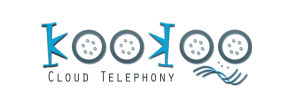 After finding initial customer acceptance, we quickly realized that in order to scale our business and make it usable across different sectors, it was important to make our solution more consumable and usable by end customers. Towards this end, our first solution was to announce KooKoo – a telephony platform that allowed end customers to build their own applications either on voice, SMS or fax. We then further enhanced our portfolio with Bizphone – a virtual PBX solution on cloud which customers could use out of the box, with no set up costs and hardware investments. The Bizphone offering helped us cater to needs of diverse set of customers across different sectors. Based on our insight and customer feedback, we enhanced our product portfolio by introducing CloudAgent – our cloud based contact center solution for businesses that are slightly more sophisticated business communication requirements. The growth of business in India augured well for us and we now offer these solutions to businesses of all sizes and sectors.
After finding initial customer acceptance, we quickly realized that in order to scale our business and make it usable across different sectors, it was important to make our solution more consumable and usable by end customers. Towards this end, our first solution was to announce KooKoo – a telephony platform that allowed end customers to build their own applications either on voice, SMS or fax. We then further enhanced our portfolio with Bizphone – a virtual PBX solution on cloud which customers could use out of the box, with no set up costs and hardware investments. The Bizphone offering helped us cater to needs of diverse set of customers across different sectors. Based on our insight and customer feedback, we enhanced our product portfolio by introducing CloudAgent – our cloud based contact center solution for businesses that are slightly more sophisticated business communication requirements. The growth of business in India augured well for us and we now offer these solutions to businesses of all sizes and sectors.
How have you ensured that you have competitive advantage in the marketplace?
We had the first mover advantage when we started – which helped us to garner the initial set of customers. However, as the marketplace started seeing benefits of cloud based telecommunication solutions, new competitors emerged. Having been in this domain for a fairly long time, we had envisioned this scenario – and have developed key differentiating strategies right from our inception.
Back in 2007, when we started, we could easily have integrated a solution from different vendors and provide the same to businesses to satisfy their immediate needs. We instead chose to develop the entire solution stack – right from the hardware, telecom cards and software on our own. Though this took us about 18 months, this approach helps us in minimizing our dependency on external software/hardware/technology vendors. We also are in a very good position to incorporate customer feedback on to our solution stack – since we have total control on all layers of the solution. This approach has helped us to innovate constantly and maintain an edge over the competition.
Another complementary strategy we have executed in the recent years is to ensure customer stickiness. We have constantly delighted customers with superior service and helped them scale effortlessly as their businesses have grown. Thus, many of our initial customers have now migrated from using the low-value virtual PBX solution to leveraging our high value cloud contact centre solution. This approach has helped us both retain our existing customers, as well as ensured that we earn more working with them.
What internal measures have you taken to ensure that Ozonetel retains its edge in the marketplace?
From an operational perspective, we have ensured that the Organization has the best leaders in every functional area. Our founding team is a great mix of complementary capabilities that are required to drive excellence across all aspects of the company. Getting to specifics, on the Sales front, we have presence now in many cities. This helps in building and sustaining relationships with customers. We realized very early that physical presence is important to close a sale. Hence we took steps to ensure we were physically accessible to customer.
On the development and R&D front, given that we are a technology based company, we have a maniacal focus on developing the best solution using the latest technological developments in our domain. We have effectively used our prior working experience to provide superior post-sales support to our customers. We take customer care very seriously – and it also is one of our key differentiators from competition, due to our superior execution and empathy for customers. All these have ensured that Ozonetel as an Organization responds nimbly to external environmental changes.
On a related note, how important it is to have a good founding team? What characteristics of the top management team in your experience will enable success of the firm, especially in its formative years?
It is absolutely critical to have leaders with complementary skills in the top management team. It is also equally important that there is good chemistry between the founding team members. Once you have the above combination in place, you will automatically be geared to deal with the uncertainties and ambiguities that confront a nascent organization. In our case, I have been very careful in signing on our founding team and the top management team. I recommend that one closely work and observe the working style of any prospective founding partner that they want to bring on board. This helps in validating the nature of contributions that the person will bring in, as well as help understand if the person gels well with the rest of team members.
Another thing that I have realized from working across multiple ventures – is to recruit your sales leader up front – right from a very initial stage. This helps in enabling the Organization to grow rapidly at later stages. The Sales leader understands the other functional units of the company better due to the fact that they worked together in the initial stages. This bonding helps immensely as the company grows.
Thank you for your insights. As a parting question, what would be the top three things that you would advice to your fellow product entrepreneurs operating out of India?
As I reiterated, starting off with the right set of founding team members – in terms of complementary skills and good teaming is very critical to any enterprise, more specifically for a technology product based company. Secondly, as the founder, ensure that you hire right for the Organization. Do not compromise on skills or on any other aspects that affects the culture of the company. Thirdly, as many others would tell you, keep your ears close to the customer. Constantly delight them and seek to improve continuously. Success will surely follow!
‘Ensure that your product delivers more value than what customers expect out of it’ – Shaudhan Desai, Founder and CEO, D’Soft Infotech
In a reflection of his journey spanning 25 years, Shaudhan Desai, Founder and CEO of D’Soft Infotech Pvt Ltd., makers of India’s leading Jewelery software shares his experiences in building the company during the license-raj era, and the changes he has seen in the business of recent times. Read on…
You are celebrating 25 years of operations at D’Soft. It is indeed a great milestone for an Indian products based company. Can you share with us how you started on this path?
 I was working with GE Medical Systems in their marketing division around that time. The use of computers by western countries during that decade made me realize that computers could help automation of routine tasks, even in India. This was the trigger to set up a company in India. The plan was to leverage computers and help data processing forms and share forms be processed quicker than the manual process. This is how we began our company during 1988.
I was working with GE Medical Systems in their marketing division around that time. The use of computers by western countries during that decade made me realize that computers could help automation of routine tasks, even in India. This was the trigger to set up a company in India. The plan was to leverage computers and help data processing forms and share forms be processed quicker than the manual process. This is how we began our company during 1988.
Starting a software company during that time should have been a very daunting task. Can you share your experiences as you worked on establishing the company?
You are right. There were many issues that had to be taken care of. To begin with, there was no computer dealer in our region. Cost of procurement of one computer itself was very high – and that too for one with a 4.77 MHz processor. Secondly, there was no skilled labor available who understood how to operate computers, the punched cards etc that was the key to execute our plan. Thirdly, you had to deal with skeptic customers who resisted any change to their existing way of doing things. Overcoming all these were quite a challenge during our initial years.
How did you overcome these challenges? What was the first success you tasted as a company?
The first real success, in my view came to us during the years 1993-95, when we designed, developed and sold an accounting software package in Gujarati language. This was triggered by an advertisement from CDAC about a multilingual card which could be inserted in the computer. Based on this idea, we developed the basic tenets of accounting which would work in Gujarati language. We targeted professional accountants who would go to every shop and write accounts. These accountants realized that they could scale their business (as in, they could attend to more customers) by using our package – since it standardized all entries and made it easy for them to provide the final computations. A few others realized that they could save themselves from doing mundane and repetitive work, and hence bought on to this new offering. In all, this offering got good traction with the segment we targeted. Even today, while we don’t sell this offering too actively, we still have about 5000 to 6000 active users of this software.
Very interesting… How did you engage with customers back then, and what changes do you see now, after 25 years?
During our initial years, to gain access to prospective customers, we relied initially on our personal networks – reaching out to accountants who maintained books at shops of our acquaintances. When we saw initial successful adoption, we resorted to making ourselves present in the seminars, specifically held for accountants. This helped us reach to all parts of the state. Now of course, with internet and other technological advances, we use all the modern methods of gaining access to potential customers.
Back then, the awareness of our customers in using the package was very low, and the expectations out of the software package also were limited. During the initial years, we had to even provide a guarantee to buy back hardware, if the customer decided to stop using our software. We had to print bound manuals and ship it for every customer – as a means of support, since no other reliable method of communication existed. Even if a customer had some feedback or a requirement, we would implement the same in the next version of our package; release it after 6 to 8 months since his request.
Fast forwarding these to now, the expectations of customers from a software product have grown tremendously. While our initial versions were on Foxbase and DOS based, we now ship products that are accessible on any device (computer, cell phone, tablet etc). Our product updates now come in 2 to 3 week cycles. Internet has helped us to support our customers better, and in real time. However, what has not changed is the reason customers buy a product. No customer will be willing to buy the product unless it delivers value to his/her business.
How did your flagship product – Ornate Jewelery Software come to be? Can you share us the making of the product and its current state?
A few factors led us to discover and develop on this opportunity to serve jewelers with our offering. A lot of our existing customers of our accounting package used to maintain books with jewelers. So, in discussion with accountants, and further probing, we discovered that jewelers’ operational lifecycle was very different than the ones followed in a typical industry. We also noted that there was no specific software available worldwide that would help jewelers benefit from automation. Hence, we designed and developed the first version of Ornate Jewelery Software during 1998 to 2002, and then subsequently have revised it many times thus far.
Our initial clients were retail jewelers, and even now, a large chunk of our 3000 odd customers are small and mid size jewelers. Since this was a segment that was largely underserved, we are able to attain leadership position in this segment within a decade. Right now, our focus has been to enhance our leadership in this domain. We now have introduced a disruptive offering – ‘Jewelery Kiosk’, through which one can virtually Try / digitally wear different ornaments or combinations and make a purchase decision. This patent pending offering has helped large jewelery houses to reduce customer churn and increase sales on account of our offering. Through our offering, customers of any large chain of showrooms can go to one retail outlet of theirs and virtually Try out all the jewelery available across any of their chain of establishments across the world.
As you look back, are there any opportunities that you felt you could not capitalize on effectively?
The only aspect that I feel we should have addressed earlier is to focus on international customers. We now have customers from UAE and US. However, I feel that we neglected a bigger opportunity, given the needs of jewelers worldwide are similar. Having said that, with so much of traction and customers behind us, I believe we now are in the best position to make our presence in the worldwide markets. This shall be one of our key priorities going forward.
As a parting thought, what advice would you like to provide to fellow product entrepreneurs operating out of India?
First and foremost, I would say that you should continuously ensure that your customers are happy and satisfied. Irrespective of whether a customer’s business with you is small or big, ensure that you serve their needs. This is a key prerequisite for growth. Every customer is very important and we must satisfy them.
Secondly, ensure that your product really delivers more value that what customers expect out of it. This will help you to sustain your competitive advantage. Good luck!
‘From zero to 9 million customers in a decade’ – The Xgen story!
Product Nation interviewed Dr. Ajay Data, Founder and CEO of Data Infosys. In this freewheeling chat, Dr. Ajay discusses his journey of creating a world class product for the masses, and his key focus areas as he built and scaled his organization from scratch. Read on…
Your company, Data Infosys, in a fairly short span of 15 years has managed to emerge as India’s leading ISP as well as the #1 communications product provider. Can you describe how all of this started?
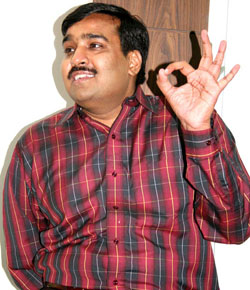 I hail from a business family whose interests were primarily in ceramics and edible oil. Like many other business persons in India, I too involved myself in family business and was well on path to take it to the next level. During 1998, I began to notice the initial signs of Indian government’s intent in allowing Internet usage for its people. Having read about the disruptive nature of internet and its advantages in the west, I always had kept tab on the developments on that front. So, when Satyam, the key ISP at that time issued an advertisement for partnership, I immediately jumped on this and initiated discussions with them.
I hail from a business family whose interests were primarily in ceramics and edible oil. Like many other business persons in India, I too involved myself in family business and was well on path to take it to the next level. During 1998, I began to notice the initial signs of Indian government’s intent in allowing Internet usage for its people. Having read about the disruptive nature of internet and its advantages in the west, I always had kept tab on the developments on that front. So, when Satyam, the key ISP at that time issued an advertisement for partnership, I immediately jumped on this and initiated discussions with them.
During the course of discussions with them, it became clear to me that those folks were being very unreasonable in their terms. I did some more background work to examine the feasibility of becoming an Internet Service Provider – and initial evaluation suggested that while the path to do it alone was very difficult, the returns would be lucrative if one did it. Hence, I chose not to partner with them, but instead compete with them. This led to creation of Data Infosys, primarily with the aim to be the Internet Service Provider of choice targeting audience from North India to begin with.
Deciding to foray into a new business, of which you had little knowledge, is extremely risky and outcomes are uncertain. How did you navigate around these challenges in the initial years?
Starting any new business will bring with it its own risks and uncertainties. In my case, I had no knowledge of dealing with servers, hardware, no proper mentor or guide to work on the domain specific aspects. I think I overcame these challenges due to two aspects. The first one – is to get your hands dirty and learn the nuts and bolts of the business yourself. This meant that I learnt how to install a modem at a customer’s place, how to plan, set up and run a call center, how to order, procure and deploy a server, configure a router etc all by myself. Once you got a grasp of the basics of the business activities, it is easier to plan and track the activities.
Secondly, my approach was to plan and execute short set of activities as quickly as possible. I failed many times trying different approaches to meet an end goal. However, since I failed early, every next attempt – I knew what not to do. Both of these helped me develop the required expertise and knowledge of the business very quickly.
While the learning may have been quick and useful, how and when did the actual validation come that your business was in the right direction?
In 1999 I planned to invest about Rs. 40 lakh as the first iteration on the infrastructure to provide ISP services. To test the receptivity of customers, I placed an advertisement in a local news paper about offering our service. The next day, I saw 200 people queued up in front of my office, even when I had not started to execute on my plan. This was good enough indication that I was doing the right thing at the right time. All that was necessary was for us to execute on our plan – and we did it well.
How did the company’s transformation to products happen? What were the key drivers?
The focus on building products got amplified due to market conditions that developed in 2001. Due to increased attention on the ISP business, there was lot more competition in the market – and prices for a new internet connection drastically fell from about Rs. 2700 to Rs. 800 almost overnight. This sharp fall triggered the need to look for ways in which we could retain our customer base and provide them more value. We decided to shift gears and develop an IP based portfolio that would help us sustain and monetize our existing customer base.
It was at this time, we discovered that among our 1 lakh user base, a lot of them were dissatisfied with the email service provided by the ISP. This led us to design and develop Xgen, initially using the LAMP stack. We offered this service to our customer base. The customers provided valuable feedback on various aspects of our product – which we quickly addressed. This ensured that we built this product, ground up based on customer requirements.
The email / communication / collaboration product is not very new to market. Also, there are existing MNC giants in this space who dominate the market. Despite this, how were you able to sustain your product offering and emerge successful?
It is obviously not easy to enter into a mature market. However, to our advantage, we had an initial customer base from our ISP services that we could start with. Their feedback helped in developing the product specific to the unique and unmet needs of the customers that were hitherto ignored by the existing vendors. While there were MNC products already in the market, we were able to execute faster than them to capture the growing base of new customers who got added to the ecosystem. Several differentiating features such as superior processing of data, optimal transmission of data over the wire helped us differentiate from competition.
For example, among our recent wins at India’s leading PSU, the customer wanted to test the ability of all the short-listed vendors to send and receive an email with a 100 MB attachment. We came up trumps and bet the competition hands down all aspects of their evaluation such as speed of handling the traffic and delivery, transmission of data from two separate physical points in least amount of time, bandwidth consumed while transmission etc. So, in summary, our ability to understand the latent communication requirements of our prospective customers, the robustness and scalability of the technical architecture we have built in our product, coupled with superior round the clock support has enabled us to become the leader in this space in our country. I feel proud to state that we have gone from zero to 9 million customers in a span of 10 years for this product!
A quick look at your customers reveals that you have a lot of government departments as your customers. A lot of people find it difficult to work with this sector. Can you share with us how you have succeeded in building such good relations with them?
At the highest level, I do not differentiate between any customers based on the sector. It is my belief that as long as you can deliver value and solve their issues, you can acquire customers in any sector. Talking specifically of the government sector, you need to understand not just the end goal that they are trying to achieve, but the mechanics of getting there – within the framework of the government rules. As with any other sector, the decision makers and the workforce using the product will have their specific challenges. One needs to understand the limitations and propose a solution that alleviates their pain points in a way that is win-win to both the parties. Constant engagement, superior support is two aspects that one needs to focus on while dealing with this sector.
Once you have succeeded in demonstrating your product capabilities and the value to the department, word spreads by itself about our product and service, and a lot more doors will open up. This is how we have managed to build and develop long lasting relationships with the government customers.
On a parting note, what are the key tips that you wish to share with fellow entrepreneurs?
I believe that we have a very big opportunity in India to develop innovative products. Looking back at my initial years, I recollect that I have spent sleepless nights attending to the needs of the business – purely because I was driven by the passion to deliver value to our customers. There have also been times where I had to engage with customers for years before they decided to choose our product. So, I urge all product entrepreneurs to follow their passion, persevere and never give up; do not hesitate to dream big. If you have the conviction and the ground intelligence about the market fitment of your offering, do not look back.
Secondly, do not let recognitions and accolades distract you from achieving better. These recognitions are good in that they are a validation of your success thus far. It helps to motivate you to do better. However, do not rest on these laurels, since a slight digression from your goals might mean you are out of the race.
Q&A with Manufacturing ERP Provider Syscon Solutions
Syscon Solutions was launched in Hyderabad, India in 1996. Its ERP product, Syscon Cronus, is targeted for small and medium manufacturing enterprises. In 2006 it became one of the first ERP solutions to be offered in the SaaS/cloud model. We talked with co-founder and managing director S. Vijay Venkatesh about Syscon’s startup experiences and lessons learned. This article is brought to SandHill readers in partnership with ProductNation.
How did your company originate — what was the original vision?
 Vijay Venkatesh: Having worked for 13 years with various midsize manufacturing companies, I thought of starting my own business and started a chemical trading company dealing with pharma and rubber chemicals and representing manufacturers from Tamil Nadu, Mumbai and Gujarat.
Vijay Venkatesh: Having worked for 13 years with various midsize manufacturing companies, I thought of starting my own business and started a chemical trading company dealing with pharma and rubber chemicals and representing manufacturers from Tamil Nadu, Mumbai and Gujarat.
When the opportunity came to start Syscon with one of my old colleagues with two developers, I thought it would be something which was of my type. Added to this was the fact that IT was only afforded by big corporates; SMEs could not dream of it.
Our initial idea in 1996 was to develop a customized solution for manufacturing industries. As we started, I observed that we might end up doing the same thing differently for different people. This would leave us with several versions of codes, which might make the maintenance and upgrade impossible. With all the facts, we decided to go in for a product development and tell the customers to use what we have rather than asking them what they want. We shut our marketing department for a while and went for a small loan and working capital. There was no looking back.
Is there a story behind your company name?
Vijay Venkatesh: Syscon stands for “System Consulting” or “System Configuration.”
What are some of the challenges you’ve had that you didn’t anticipate? How did you resolve them?
Vijay Venkatesh: I always used to think, though there is a huge number of SMEs in the market, that the rate of customer acquisition is very slow. But now, instead of blaming the SMEs, I think that it is due to the fact that there are more failures than successes of ERP among SMEs in India.
It is the responsibility of the ERP vendor to bring in all the missing links to address this challenge. I learned that we needed to make our ERP product simple and also train our customers because SMEs are not computer savvy. I also recognized that SME CEOs have so many things to do that they cannot devote time to software product reviews. To address this challenge, we implement only the essential modules to start with and then scale them up step by step.
Please describe one of your company’s lessons learned and where it occurred in the time line of your product development.
Vijay Venkatesh: We have learned several important lessons of being a product company as opposed to an IT services company. First, instead of asking the customer what they want, we learned to tell them to use what we have. Next, we needed to make sure any new requirements made sense for larger target clients and make sure that we take time to bring those features carefully in to the product.
Also we learned that a software product company needs a complete ecosystem including sales, implementation, support and training, coupled with training partners, technology partners, hosting partners and industry associations.
How did you find your first customer? Did it take longer than you anticipated?
Vijay Venkatesh: Everest Organics Limited (EOL) became our first customer in 1999. I met the managing director and told him about our product and vision of being a long-term committed vendor for the SMEs. We gave several rounds of demos for EOL’s core team. After four months they released a purchase order for us.
At that time our product was not fully mature in several functionalities. We have done numerous amounts of customization (almost 60 percent) and made more than 250 visits over nine months for training and implementation. Since there was no Internet in those early days, the data transfer was happening through floppy discs on a daily basis.
The EOL office and factory works online now. We are proud to continue serving EOL today after 14 years!
With our experience of EOL and the product maturity of our ERP solution we are in a position to serve much bigger clients in the pharma segment. Some of the new pharma clients have seven manufacturing units. Our implementation now takes eight to 10 visits over three to four weeks compared to nine months with EOL. We also have started remote implementation for SMEs, which is very cost-effective and easy to manage.
Keeping Data Theft Prevention Simple & Green!
 Zarir M. Karbhari is the Chief Architect of CopyNotify! & Founder of CygNET Systems Pvt. Ltd shares his journey of diversifying a outsourced programming services company into a software product company. The company was founded in 1995 with a focus of offering hi-tech outsourced programming services for companies based all over the world. The company maintained this hi-tech niche by ensuring that most of its projects involved network programming, communication protocols and device driver development for various operating systems.
Zarir M. Karbhari is the Chief Architect of CopyNotify! & Founder of CygNET Systems Pvt. Ltd shares his journey of diversifying a outsourced programming services company into a software product company. The company was founded in 1995 with a focus of offering hi-tech outsourced programming services for companies based all over the world. The company maintained this hi-tech niche by ensuring that most of its projects involved network programming, communication protocols and device driver development for various operating systems.
Decision to diversify to product development — What factors contributed to this?
Based on inherent in house expertise and experience of over 100,000 programming hours in the field of application development, networking, security and communications, a strategic decision was made by CygNET Systems Pvt. Ltd. in 2007 to move up the ‘value’ ecosystem and develop a network security software product which catered to the needs of the small business user which was at that point a perceived need of the hour.
Explain the journey of evolving your core product. What aspects and feedback were important in this process?
Security against data theft of source code was becoming paramount in the outsourced programming industry in India and many nightmarish stories of how data was being copied in an unauthorized manner and without detection via USB flash drives were beginning to surface. So theft via USB became the initial ‘problem to solve ‘. Instead of searching the web for similar
anti data theft products and cloning them, the engineers at CygNET Systems Pvt. Ltd took the route of talking to system administrators & small business owners and created a vision specification for CopyNotify based on their feedback.
The company had identified a problem, spoken in detail to those who were facing the problem and then went on to design a software product to solve the problem. From a simple beginning of just detecting the insertion of USB Flash Drives, the product soon evolved into a full fledged Data Security Software for small office networks.
Can you share details about your products.
CygNET Systems currently has released 3 products.
1. CopyNotify! (Data Protection that went GREEN)
CopyNotify! is an entry level data protection software designed specially for the small business / SOHO networks. The software deploys anti data theft measures for computers on the office network by disabling the copying of data to external USB drives and Smart Phones, blocking internet connectivity via portable modems / data cards as well as restricting browser based uploads of data.
The software monitors user logon activities such as privilege levels, remote logons and invalid logons. Software installs and un-installs on the network are logged as well as rogue devices attempting to access network resources can also be detected.
CopyNotify! goes GREEN in data protection by also offering electricity saving features such as switching off IDLE machines and the auto shutdown of computers after office hours.
2. Insta-LockDown ( Data Protection at a Key Stroke )
The personal edition of CopyNotify! is called Insta-LockDown. It has been designed for single computers / laptops and locks down the copying of data with a simple keystroke combination.
Insta-LockDown restricts the copying of data through various routinely used data channels such as the internet, file attachments, removable USB devices and Bluetooth transfer to smart phones and comes in handy when single PCs are used by multiple users and protection of confidential data is a concern. It also plays a protective role against data theft when administrative privileges are granted to multiple users of the same PC or the admin password has been inadvertently compromised.
3. GreenNotify! (Energy Saver Software)
GreenNotify is an energy conservation software that reduces electricity bills of small businesses by automatically switching off computers that are not being used and shutting down computers automatically after office hours.
Your views on how your offering is differentiated in the market / Competitive advantage you have over others in the same space. Your plan of achieving success in a crowded and mature marketplace.
During this endeavor of developing a security software, CygNET Systems Pvt. Ltd in its strategy never tried to compare or clone its software with those released by its perceived competitors. A data security need had been perceived and the requirement of simplicity of acquisition, cost and expertise for Indian conditions had to be addressed.
In today’s digital world, protection from data theft is crucial and soon will become a ‘must’. However for small business users, the prohibitive acquisition costs of sophisticated Data Loss Prevention software and the level of IT expertise required at times results in data security being ignored all together. Also more often than not, the DLP software is an overkill in terms of ‘cost versus capability’ for small organizations due to non suitability of all available software features.
With CopyNotify! and its affiliated products, data protection software is made as easily available and affordable as a ‘wada pav’. A ‘wada pav’ is a popular spicy fast food native to Maharashtra. It is filling, inexpensive and caters to the masses.
Keeping the analogy of the ‘wada pav’ in mind, CopyNotify! offers data security solutions that brings enterprise level data protection to the average computer user. The software does basic data protection, is inexpensive in acquisition, feasible in implementation and simple enough to accepted by the average business user. CygNET Systems firmly believes that in India unless the use of data security software percolates down to the average user, an acceptable deterrence against data breaches will never be achieved whatever the size of any organization.
Very low cost of acquisition, suitability for Indian conditions and ease of use of the software products developed by CygNET Systems Pvt. Ltd are already paying rich dividends by the way of increase of sales.
Key learning from selling to customers
Feedback is crucial for a good product. Right from its inception, the team behind CopyNotify! have taken the feedback of users in the field, tried to understand the problems they face in a routine day and then design the software to alleviate these problems. This principle of user feedback based feature additions has made CopyNotify! very popular with its existing customers.
Your views on relevance or importance of leveraging channels and partnerships to sell.
It is far too expensive and time consuming for a startup to set up its own channel of resellers / distributors or having its own sales force. Partnering with existing VARs/Distributors/Resellers is best way to proceed as these organizations already have existing sales networks which can used to push the product out to the market.
The biggest difficulty is getting a partner / distributor to sign up with a start up is the ‘curse’ of being an unknown brand as the effort to push non branded product becomes more time consuming and expensive for the partner hence the reluctance to partner with a start up.
Your views on alliances and its benefits/pitfalls.
For any software product, alliances should not be shirked away from, be it technical, financial or by the way of sales and marketing however care should be taken that all is in ‘black and white’ and immense care should be taken that in the hype tornado of ‘promises and assured success’ the best interests of the start up is kept in mind at all times.
Your views on networking with industry colleagues and participation in conferences. The benefits or pitfalls of the same.
Networking is great provided one can get themselves in a group that is one step ahead of one’s current stage of business and can actually help with getting more sales. Networking is about getting the right connections to make more sales and not just about collecting visiting cards.
Your message for product development entrepreneurs for India.
You might have a great software product but unless you know how to tell the world about it, it will never sell. If it does not sell, your idea was of no use in the first place.
India has the potential to create great product companies. The ecosystem is evolving and we are glad to be part of it
Anup Tapadia, CEO, TouchMagix, has revolutionized interactive systems with his innovation. Driven by an aspiration to innovate and deliver great experiences in gesture based interactive display systems, his products have reached numerous brands and consumers since the company’s inception a few years back.
His work has earned him recognition from the likes of Bill Gates, Dr. Abdul Kalam, Dr. Raghunath Mashelkar, R. Balki and Azim Premji who have acknowledged his sheer intelligence and tech driven entrepreneurial spirit. The British Government awarded him the “Global Young Creative Entrepreneur” honor in 2010. In an interview with ProductNation, Tapadia talks about his aspirations in making India an innovation hub and to develop world-class products.
You offer a variety of interactive display solutions. What is the market potential for these products?
At TouchMagix, we are focused on creating next generation interactivity and engagement technology and have created products that use motion, gesture and touch for various applications. We manufacture and supply both technology and equipment that have been creating global standards for giving audiences a lasting impact and brand impressions. TouchMagix has a variety of interactive display products like Interactive Floor, Interactive Wall, Multi-Touch MagixKiosk & Table, MagixFone and rich capabilities to build customized solutions and content.
Customization of content is an aspect which increases the market potential of these products manifold. These applications range from creating engagement and experiences for brands, creating an interactive ambience in hotels and lounges, to marketing initiatives at on-ground activities. This technology is also being used for children entertainment, education and health. Being unique in nature, it enables brands to create conversations with their consumers, thus enabling them to become one with the brand. Over the years, we have penetrated globally across a variety of sectors including real estate, banking and financial sector, education, information technology, pharmaceuticals, healthcare, and hospitality sectors.
Is the market willing to bet on new products?
Today, Indian and global brands are looking at innovative avenues and channels to communicate with their target audience be it customers or internal audience. With brand fatigue becoming a cause of concern for brand managers, interactive products like TouchMagix is an ideal solution. The real USP of our product is in the usability, open SDK interfaces and core tracking technology IP which allows us to track gesture/touch at a higher accuracy level and speed.
How soon was /will be your company feasible in terms of generating revenue? What are your sales projections?
We have been profitable since the first year we started business. More than a million people have engaged/experienced TouchMagix products world wide and the number is growing continually.
Indian IT industry has largely been IT services focused. What has been your experience in building products? What were the challenges faced?
We firmly believe that India has the potential to create great product companies. Our experience in building products based out of India has been quite interesting. Building electronic products is not an easy task in India as it is capital intensive and expensive. A major challenge was to find the right people and retain them for R&D based jobs. The ecosystem is evolving and we are glad to be part of it.
Do you feel the Indian ecosystem is software-product friendly? What is needed to create world-class products?
The eco-system is still evolving and education needs to promote research driven product innovations. Most of us prefer the safer route and hence many end up in starting service based companies.
For a young 24-year old guy to have been honored with the ‘International Young Interactive Entrepreneur Award 2010’ by British Council, and ‘Best Young Entrepreneur Award’ by a business magazine, says a lot about your achievements.
I was drawn to computers when I was just seven. In the subsequent five years I mastered over 15 different computer programming languages. Art and Technology have always intrigued me. When I saw Tom Cruise playing around with large displays in Minority Report, it triggered a series of thoughts in my mind on the possibilities of this kind of technology if brought to reality. This led to launching of TechnoKarma Labs. At TechnoKarma, we undertook many projects in the IT networking space such as creating low-cost firewalls and a low cost wireless mesh router, which enabled Wi-Fi connectivity in IIT Pune’s campus. One of the projects from TechnoKarma Labs was later spun off as TouchMagix.
My passion and perseverance to create a truly Indian product for global markets was the reason for my success.
You have also received appreciation from the likes of Dr. APJ Kalam, Bill Gates, Azim Premji and others. How does it feel to be acknowledged by these eminent people?
It is overwhelming when stalwarts from the industry appreciate your efforts. These endearing comments reinforced my confidence and also encouraged me to keep moving on the path of innovation.
What is the road ahead like for TouchMagix? Where do you see the company going?
While multi-touch technology revolutionized the way we currently perceive and engage with technology, gestures and motion will make user-interface even more immersive and instinctive. The potential of this technology is great today, and we are seeing that with the response for our products globally.
From keyboard and mouse to touch and gesture, the human interaction with devices have evolved in a big way to help people interact in a manner that is appropriate for their lives. In future, we aim to create products and content that would make human interaction with devices more intuitive and enable us to create memorable experiences.
What learning would you like to share with others from what you have learnt?
For emerging entrepreneurs I would suggest it’s essential for one to work at one large corporation and one small start-up to experience and understand the functioning of both setups. I feel India is a land of great opportunities and there is never a better time than now to kick-start new business in a growing economy.
TouchMagix Products
- MotionMagix™) converts any floor/wall into an interactive space for educating and engaging users with fun, action and excitement.
- MagixTable™ is world’s thinnest 40 point multi-touch plug-n-play surface computer table loaded with rich application suite and easy customization for corporate and entertainment application.
- MagixKiosk™ 32″ 1080p HD can be used in 4 different form factors like table, tilted kiosk/workstation, high bar table, or as a standing flat display.
- MagixFone™ is Any Display Any Phone interactive technology which gives your audience the ability to control the screen for playing games, answering quizzes, sending social messages and much more using their mobile phone.
- MagixFone™ hardware picks-up the call or interprets an SMS which allows the user to use his/her mobiles keypad or voice to interact with the display.
ParaBlu: Store, Sync, Share, Stream, Search
ProductNation interviewed Kameswaran Subramanian, Founder of ParaBlu Systems, which focuses on helping its customers take their business to the cloud. ParaBlu offers cloud storage solution with emphasis on privacy and control.
Learn more about how Kamesh and his team built a world-class product from India.
What was the motivation to start ParaBlu?
I love bringing new products to market. I have been doing that for over a decade now with other MNC’s and startups. ParaBlu is my second startup. I was technical partner of another Switzerland based startup where we developed products for Swiss Banks. The fundamental premise of starting ParaBlu is to start a global company from India.
Digital Privacy and Security is of paramount importance. I have tons of data and tried using many major offerings. But if you dig deep enough, we can realize that all of them have poor-to-none full user privacy. The recent revelation about NSA/Prism is only the tip of the iceberg. We wanted to provide a solution that can be used by enterprises in a manner they deem fit.
How did you zero in on offering Storage as a service to your customers?
The original idea was to provide a simple mechanism for people to seamlessly synchronize data (photos, videos, digital files, folders etc.) across all devices for an individual or family. We were developing the product for consumer market and lot of emphasis has been given on user design and simplicity of usage. We wanted to bring the cloud-storage into individual’s home. Towards end of last year, we saw an opportunity in the enterprise market. After piloting the product with businesses, we quickly realized that there is a market-fit and moved into SaaS model. We are now offering multiple variants of our products.
What is so unique and differentiated in your offering compared to others in the same space?
People think about Google Drive, Microsoft Sky Drive, Apple iCloud or Dropbox when we talk about Cloud Storage. They are public cloud storage and we are fundamentally different from them. For example, if you put a document in Google Drive, Google can read, create derivative works, publicly display and distribute the content. These are not entirely apt for businesses.
We offer private cloud storage to our customers with clear understanding that they own the data. ParaBlu offerings bring you the all familiar cloud storage, sync, share, stream and collaboration facilities with privacy and control that ensures that none of your files, media and assets are lost.
From technology perspective, we have had tons of breakthroughs and some key differentiators are mini-clouds (Cloud within a cloud), content search, end-to-end encryption, etc. We are also coming out with a plug-and-play hardware offering.
 Key differentiators, which our customers love, are not from technology 🙂 They love our extremely dedicated-customer support, simple and intuitive design, installation within 60 seconds, lowest total-cost-of-ownership in our space and ability to use a technology product without having to even have an IT admin. The most liked feature for an SME about our offerings is the ability for the management to see the entire company information (Engineering, Planning, Production, Sales, Marketing, etc.) with detailed auditing in a single place from anywhere in the globe.
Key differentiators, which our customers love, are not from technology 🙂 They love our extremely dedicated-customer support, simple and intuitive design, installation within 60 seconds, lowest total-cost-of-ownership in our space and ability to use a technology product without having to even have an IT admin. The most liked feature for an SME about our offerings is the ability for the management to see the entire company information (Engineering, Planning, Production, Sales, Marketing, etc.) with detailed auditing in a single place from anywhere in the globe.
Can you throw light on the interactions with your initial customers? What have you learnt from them?
A Lot! We spent a lot of time with our customers understanding how their business works. We spoke to 100+ SME’s during our pilot stage. Many of our features were driven by market. We use LEAF – Listen to our customers, Evaluate the idea with other customers, Analyze the results and then convert them into a product Feature.
For Indian businesses, technology is a means of achieving their business productivity. Their major questions are about how the product increases productivity, impact on bottom line and ROI. If a product genuinely solves their pain point, then they are ready to accept an IT solution. There is a dearth of high-quality cost-effective solutions for the SME sector in India. That is both a market opportunity and a saddening fact that mainly “service” and “outsourced” companies crowd Indian technology space.
Some examples of our learning:
- Many SME’s operate on low bandwidth Internet connection and we had to go-back and optimize data-transfer and network usage for them.
- Businesses don’t care if we use 128-bit or 256-bit encryption. They trust us to take care of their digital security. There is a huge onus on us!
- Customer support is extremely important. It doesn’t matter what your contract or SLA says – they need to speak to someone who can answer their questions, anytime of the day.
- What is obvious to engineers need not be obvious to users. Understanding customers’ psyche and working pattern is important. We ran usability sessions to make our product features easier to use.
- Customers found use cases for our product. We would have never thought about it!
Indian SME customers are known to be averse to embracing cloud-based solutions. They also harbor doubts about security of any offering, which is outside their organization. How have you dealt with these perceptions?
It is true that a large section of this segment is currently skeptical about working with something that is outside their physical organizational boundaries. However, I see that there is a rapid reversal of this tendency. This has primarily been due to the adoption of cloud by some early movers in the same clusters. As the fence sitting potential customer listens and understands the value and the precautions taken to safeguard the privacy and security of their data through another colleague who has embraced our solution – the acceptance levels increase.
Our offering actually provides more security to business – since its architecture was built keeping the retail consumers in mind. When you think of devising a solution that any end user could use, naturally you would place more emphasis on the access privileges, backup options, and data storage and synchronization aspects. Most of our customers are via referrals from other customers and it has become easier. For extremely paranoid customers or where there are specific requirements, we also offer on-premise installation of our server.
How helpful has the channels route been to work with your customers?
Working with channel partners is a new experience. If you can ensure that entry barriers to use your offering are minimal – such that value can be shown in minutes, and if the post deployment maintenance is negligible – both these factors form a very compelling value proposition for any channel partner to sell your offering.
We are also looking for new channel partners for expanding our product reach.
I notice that you have leading industry veterans as your mentors. Can you describe how having them on board has benefited you?
They have been of invaluable source of strength, inspiration and support. Nagendra Satyan has tremendous experience in growing enterprises and has done it successfully across many companies including EMC2 India. Anand Prahlad is currently MD of McAfee India and has experience of taking a startup to an IPO in US. Startup is like a maze and it is very helpful to have people who have done it before. It is necessary to bounce ideas off somebody. They have played a crucial part in multiple aspects – from refining the product, helping in acquiring pilot customers, industry connect, and so on.
I would recommend that all budding entrepreneurs, specially the first time entrepreneurs to have experienced mentors on board.
What are the three takeaways that you would provide for your fellow product entrepreneurs operating out of India?
First, get your family’s buy-in prior to venturing into product development space, especially when you operate out of India. Running a startup is like having a kid. There are no off-days or even off-hours. Everything else will take a back seat. Startups are not easy and are NOT for everyone.
Be very passionate about the idea. Startups do not succeed over-night. There will be too many distractions that will come your way and there will be times where it will be easier to give up and get back to work with an MNC. It takes passion to keep going.
Finally, like I stated earlier, get advisors and mentors early on. They will act as a rudder to your ship and will help you navigate the ship in case you land in chopping waters.
Protect your Enterprise Network from infected BYODs – A disruptive product from i7 Networks
Manjunath Gowda (Manju), CEO if i7 Networks, shares his experiences of starting up a products based company, ground up from India. In this freewheeling chat, he discusses on various topics ranging from branding the products, managing investor relationships to seeking IP protection for products offered in a niche, evolving marketplace. Read on…
What was the motivation for you to start i7, a product based company?
 The decision to start i7 actually was spurred due to a comment from a CEO of a multinational company. While in discussion with him in the valley, he seemed to indicate we folks from India would never be able to run a product company successfully out of India specifically in networking. While his comment pricked me instantly, I took time to objectively reflect on his observations. After analysis, it occurred to me that I could prove him wrong – since I figured out that we had all ingredients to build one and sustain it too. Besides this, I had just then successfully sold off my previous venture. I was looking at doing something more exciting. All of these converged, and so i7 Networks came to be.
The decision to start i7 actually was spurred due to a comment from a CEO of a multinational company. While in discussion with him in the valley, he seemed to indicate we folks from India would never be able to run a product company successfully out of India specifically in networking. While his comment pricked me instantly, I took time to objectively reflect on his observations. After analysis, it occurred to me that I could prove him wrong – since I figured out that we had all ingredients to build one and sustain it too. Besides this, I had just then successfully sold off my previous venture. I was looking at doing something more exciting. All of these converged, and so i7 Networks came to be.
You have chosen to build products in the Internet security space, and specifically addressing the BYOD challenges. Can you explain the reasons behind choosing this segment?
First, the Internet security space is the most volatile and evolving area that businesses need to deal with. Hence there is lot of opportunity to offer disruptive products and services, to meet diverse security needs of enterprise customers. The emerging challenge these days is due to change in the nature of threats. Earlier, most products and solutions were geared towards dealing with threats emanating from sources external to the enterprise. Now, enterprises are grappling with the damage that could be potentially caused due to the internal threats – ones that emerge from within the organization. BYOD is an easy entry point that could cause this. So, we chose to focus on providing products and solutions addressing this area.
How do you differentiate your offering with other players in your field? What are your strategies to achieve competitive advantage?
Our product is disruptive in the segment. Traditional vendors and competition is focused on deploying an agent on to every device that needs to connect to the network in order to discover and manage security threats. We have completely inverted this proposition – and are offering a purely agent-less and zero latency based solution. This means that users won’t in any way be disturbed as they connect their devices to the network and work. The IT policies in enterprises are increasingly being influenced by end users in the company these days. We plan to effectively leverage this shift in the decision making patterns of the IT companies and use it to our advantage.
Since you are offering an unconventional product, what steps are you taking to market your product, so that it is viewed favorably by prospective customers?
The folks in the line of business readily can see the benefits and advantages that our product brings to the table. However, to ensure that we have buy-in from all stakeholders in the enterprise, it is important to make them aware of our product and our strengths. Hence, brand building has become an important activity for us. We do it by positioning ourselves as the thought leaders in the BYOD security space. We are active on all the related forums on BYOD security; we publish and provide insights on BYOD security regularly in leading worldwide magazines, blogs. We are present in all leading conferences on this topic. These have helped us to gain visibility to a large extent. We are seeing some early successes. You should note also that we have not spent much by taking this course to market our product.
Second, recent developments in the world, especially the programs like PRISM from the US government have actually helped us open up new markets and opportunities. A lot of developing countries are now seriously considering evaluating indigenous security solutions rather than depending on MNC based vendors. This is one development which we plan to leverage effectively. In this regard, we are coming up with an alliance of likeminded security solution providers from the developing economies. We intend to form a common forum and through it, we want to engage with governments of emerging countries.
I would imagine that channels are an important aspect of you reaching out to the market. What has been your key learning, working with them?
Dealing with channel partners who operate in services space is entirely different on how one would work with channel partners in the products space. Having come out fresh from selling my services venture, I had a lot to unlearn in this aspect, and learn new ways of dealing with products selling channel partners. In the products space, the channel partners will listen to you only if you can help them solve today’s problems, or if you can solve a real need in the market that has not yet yielded satisfactory outcomes. As always, relationship and transparency builds in trust – and so, we have been able to rope in credible channel partners in East Asia, Europe and US.
I notice that you have repeat investors, even when the nature of your current company is vastly different from your earlier one. In this context, I would like to know what it takes for one to build sustainable relationships with your investors.
I guess being honest and being punctual with my investors helped me a lot. I respect human relationship without expecting anything from them.So, when I need anything it becomes easy to ask something. This is what I think has led to sustained faith being imposed by my investors on my ventures and plans.
You have taken steps to protect your IP by filing patents. Tell us your experiences as you filed your first patent?
I was completely naïve on the aspect of IP for my product. However, when I visited my friends in the Bay Area and discussed my product and its features with them, all of them educated me on the value of protecting my IP, especially given the disruptive nature of the offering. They forced me to file for a patent ASAP. Having done that, and after spending more time with them understanding the nuances and benefits of filing patents, I realize the merits of doing so. I would urge all product entrepreneurs to consider this seriously, especially when your product idea is in a niche, underdeveloped marketplace.
You have used media/PR effectively in both of your ventures. What tips do you have for product entrepreneurs in India regarding these activities?
In India, we tend to focus a lot on engineering/product development aspects, at the expense of other key and important aspects such as positioning and selling your products. One should realize that marketing your product is of paramount importance. Media and other online mechanisms such as blogs, online magazines etc are a great way to reach a wider set of audience. The key thing is to not do these activities in spurts, but as a regular habit. Results from these activities cannot be achieved overnight – it takes time, and a lot of hard work, patience and perseverance. You need to establish yourself as the go to person in the area of the product / offering. You also have to be honest and genuine in your views and opinions. This is how you can build credibility. In summary, never take your foot off the marketing pedal is what I would say.
KeyMails is making the email smart for Outlook users!
Still believe email is small and dying a slow death in the world of IMs, tweets and Facebook messages? Just have a look at the massively viral ‘Every Second on the Internet’ and scroll till the end to get a visual realization of how big a part of our life email still is. Email is still the first choice for internal communication and chatter within a number of organizations owing to its ubiquitous nature and presence, not that it was intended to be used that way.
A number of startups are now building tools to help users get more out the email ranging from helping you get the social media information to turning your inbox into a to-do list in itself. But it is no wonder that the biggest peeve with the email has been its overload. With independent researches confirming the belief held for long that the overdose of email has severe effects on productivity costing precious man hours and increased costs.
With the latest Gmail update the users found the presence of the tabbed inbox easily helping filter the signal vs noise between social media, promotions and genuine email content. But Bangalore based KeyMails is looking to provide a similar level of productivity for the Microsoft Outlook users. Keymails is a plugin for Outlook helping users to prioritize the email and the best part it becomes efficient over time based on the usage patterns.
What is KeyMails and how does it work?
The KeyMails team is reinforcing the belief that for a large number of corporate users the desktop/laptop is the device where the emails get done with. Thus the plugin keeps all of the information on the device itself and doesn’t send anything on the cloud. Options like the ability to archive a mail till a due date along with being fully functional offline makes it an impressive tool for Outlook 2010 users.
KeyMails works within Outlook system by creating a separate folder which implies that the user is still using the familiar Outlook interface thereby reducing the learning curve. By default the system prioritizes the mails based on the previous usage patterns but moving on the user can upvote/downvote certain users or domains to affect their priority ranking in emails for the KeyMails folder.
But why email and why Outlook?
Pankaj Kulkarni is the founder of Colimetrics the parent company behind KeyMails and he has been in the corporate world long enough to understand the email usage tools and patterns. According to him there are enough corporate Outlook users out there to keep them busy in building more efficient tools. With such a big market, building tools for them just is the right place to be.
Users & Funding
KeyMails had a public launch in June of this year and right now they are working on adding more users. The current user base befits a product newly launched but they have seen individual beta users come from organizations ranging from Viacom to Infosys to even the White House.
The venture is partially self funded by the co-founding team of Pankaj and Phaniraj with the money coming from the sale of their previous venture S7 Software Solutions and venture money coming from investor Yogi Kandlikar, who also happens to serve as the teams resource in the Silicon Valley.
Product timeline
Pankaj promises that what the user sees right now is just a sneak peak of the things to come. In the coming months they would be focusing on marketing campaigns and documenting content to help make the on boarding process a breeze. 
The short term goal for KeyMails is to introduce a freemium model of the product to get the user a taste of the product which is currently priced at US $25/year or US $3/month with a 30 day trial period. Apart from this Pankaj emphasized on the long term vision of building a host of services and tools around and email and productivity itself. Which would begin with email diagnostics and team collaboration to knowledge management, to help document recurring issues in the organization to help the staff.
On one hand desktop users would find boon in the tool built by Colimetrics on the other lack of multi-device or mobile support could be a bummer in certain regard. But then no two email users are alike head on to Outlook and give your productivity a spin on KeyMails!
“We are getting the world to gain confidence on enterprise products developed out of India” – George Vettath, CEO of Kallos Solutions
ProductNation interviewed George Vettath, Founder and Managing Director of Kallos Solutions to learn about the journey of his company in the Enterprise software space for the past decade. In this interview, George explains how his background and experience helped in creating a superior product, and provides useful tips for entrepreneurs in this space to get more effective. Read the full story here….
What was the motivation to start your company?
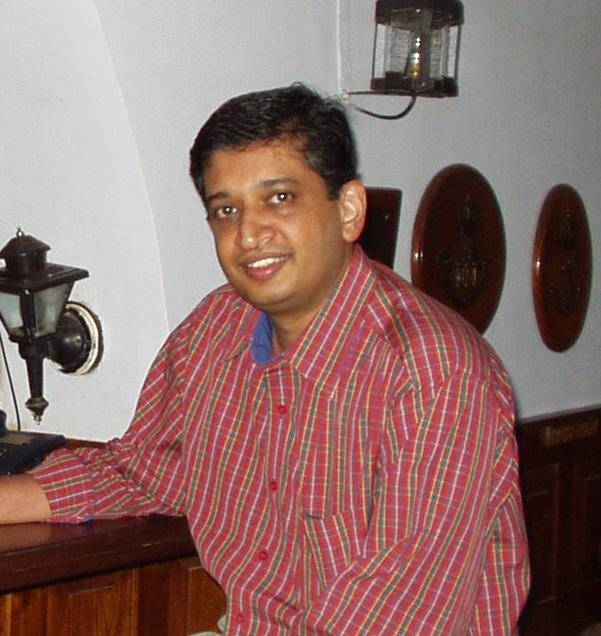 I had been working in the enterprise software space for over 16 years prior to taking the entrepreneurship leap. Around 2003, I was fascinated by the model based development – a technological innovation that started emerging in rapid software development. I immediately recognized an opportunity to leverage this new model, using which I could reduce time to value to a customer by five fold. Besides this, at that time, I had a different point of view on the direction of strategy with my employer. Both of these led me to start Kallos in India.
I had been working in the enterprise software space for over 16 years prior to taking the entrepreneurship leap. Around 2003, I was fascinated by the model based development – a technological innovation that started emerging in rapid software development. I immediately recognized an opportunity to leverage this new model, using which I could reduce time to value to a customer by five fold. Besides this, at that time, I had a different point of view on the direction of strategy with my employer. Both of these led me to start Kallos in India.
Why did you choose India as a location?
First, I wanted to give back to my country that helped me get global exposure, via sponsoring of my MBA at Sydney University, Australia. Secondly, my initial working years were spent at CMC and RAMCO Systems, during which I had developed a good understanding of the needs of the Indian customer. Thirdly, my roots and extended family are here. All of these were principally responsible in my decision to start my venture in India.
Starting a new company in the enterprise space, under conditions that prevailed a decade ago should have been very challenging. What gave you the confidence to pursue this path?
Like I mentioned earlier, during my professional career, I was already exposed to the nuances of dealing with Indian and global customers. I was part of the core team at RAMCO which was tasked to build its ERP product. Further, as global head of product management, I was given the responsibility to broaden the reach of RAMCO products to 8 different countries. The experience of selling these products in different geographies, dealing with competition – primarily SAP that came in to Indian market and virtually uprooted us, reconfiguring our strategy to survive the onslaught of global vendors, was the primary source of my confidence. I realized that I could still make my mark, despite all the heavy competition, as long as I had a sustainable competitive advantage against all these vendors.
Can you tell us on how you could translate your thoughts into a real sellable product – and one with a competitive advantage, over the past decade?
 From 2003 till about 2006, we focused on building the product suite on the principles of model driven development. I bootstrapped the company during this period, by executing US projects on the side. From 2006 onwards, we started aggressively reaching out to customers and began delivering product centric solutions, based around the PaaS infrastructure that we had developed in house. The business model was to keep the PaaS in-house, but leverage the platform to deliver rapid solutions and customizations, around our ERP/CRM and HRMS products. Thus, we differentiated ourselves with others in the marketplace as providers of product and platform centric customized solutions, delivered within relatively short timelines.
From 2003 till about 2006, we focused on building the product suite on the principles of model driven development. I bootstrapped the company during this period, by executing US projects on the side. From 2006 onwards, we started aggressively reaching out to customers and began delivering product centric solutions, based around the PaaS infrastructure that we had developed in house. The business model was to keep the PaaS in-house, but leverage the platform to deliver rapid solutions and customizations, around our ERP/CRM and HRMS products. Thus, we differentiated ourselves with others in the marketplace as providers of product and platform centric customized solutions, delivered within relatively short timelines.
Another aspect to note is that we did not concentrate on hyper growth. We took a very long term view on the road to profitability – knowing fully well that as the product matures, growth will follow. We also did not adopt aggressive marketing tactics. All we did during the past decade was to wait for a disillusioned customer tap our door after he or she had burnt their fingers trying to adopt a MNC vendor based solution and failed. I realized that the most difficult area in the Enterprise suite implementation is in addressing the variance of requirements across customers in their respective supply chains. Here, we leveraged our development strength to rapidly customize solutions as per customer requirements. These aspects have enabled us to sustain the edge against competition over the years.
Interesting insights… Can you share to us your moments of wins during your journey thus far?
We have provided solutions to over 170 plus customers thus far – and each one is an important milestone in itself. If I need to recollect the ones that had most impact to the organization, I would think the win we had at CSS Corp for our CRM solution, and wins at Bluedart Aviation (subsidiary of DHL), Scope International (Subsidiary of Standard Chartered Bank) and many services based BPO Organizations for our HRM solution as the key ones. Some of our international wins from the KGK group in Hong Kong and LCC in the Middle East for KServeHRMS, are also milestones since it was the early international sales of our products. The CSS Corp win validated our PaaS play, as well as demonstrated that our solution could scale to support a workforce of 400 users as early as 2007. The Blue Dart Aviation, Scope International and BPO HRMS wins gave us confidence to ramp up KServeHRMS as our current flagship product.
The KGK Group in Hong Kong initially bought the HRMS package for deployment at one of their offices – but after successful implementation there, they expanded to roll it out in many of its group companies in the Far East. An e-publishing firm in Delhi, Aptara Corp was able to effectively use the operational workflow automation solution for its 1100 employees. Power2SME, a Delhi based SME aggregator standardized on our ERP offering and went on to get funded on account of our backbone solutions. These are some experiences that I can recollect…
Over the years, you also would have your share of lost opportunities. Can you shed light on a few key ones?
As regards to lost opportunities, I think we focused initially on selling KServeCRM and KServeERP instead of KServeHRMS. We realized a bit late that the gap in the market was really in the HRMS space in India. We had the best in class HRMS solution and even those customers who had deployed MNC based solutions had not availed of the HR part for a variety of reasons.
The second one in terms of missed opportunity would be our lack of focus on going global earlier. International product sales are more profitable since they are tax free, and easier to implement due to maturity in their processes. In fact, the global customers that we have today – all of them came to us directly based on the good feedback and performance of our products in the field.
Having traveled the road thus far, what advice would you like to give to product entrepreneurs operating out of India?
Over the years, I have seen many companies start off and then shut down. While the reasons of closure could be many, I would advice all product entrepreneurs to have a proper focus on cash flow management and customer management, especially if you are addressing the domestic market. Software is not something that is understood fully by customers in India, and so, you need to work on getting them to understand the hard work that you are putting in to make them successful. Once they see the intent and integrity, customers will never hesitate to pay.
On a related note, personally, I spend about 2 to 3 hours every week for the startup and product ecosystem. I also aggregate the key challenges faced in this region to the appropriate policy makers in my capacity of being the Regional Chair for NASSCOM Emerge Forum for the past 2 years. I feel that over the past two decades a bunch of like minded folks have provided confidence to the world that we can conceptualize, build and sell enterprise products out of India. I urge all the fellow entrepreneurs in this space to reach out to us, collaborate and ensure that we take this momentum forward, and to greater heights.
Thrillophilia is making experiential travel mainstream
Travel by no means is a small industry for Indians. The country is brought up on the lure of the annual pilgrimage to a new destination each summer when the schools close for vacations. Be it visiting family and friends in new towns or high end travel to other countries, we are willing to spend money for it. A survey commissioned on behalf of Trip Advisor goes on to say that Indians will spend more on vacations this year and within the next 20 years the number of Indians flying abroad would peak six times the current figure.
But how does it connect with the three year old Bangalore based Thrillophilia and its co-founder Abhishek Daga? Avinash Raghava and I had a freewheeling chat with Thrillophilia to find out about them. Read on the excerpts:
What is Thrillophilia? 
Thrillophilia is a three year startup in the adventure travel space. They focus on solving the pain point of finding and experiencing unique activities and things to do in India. Enabling adventure seekers to move beyond the hotel-as-a-destination to experience what the region has to offer by focusing on itineraries as exciting as kayaking in Goa to walking tours in old city of Mysore.
How did it all start?
Travel had always been a passion for Abhishek and his co-founder Chitra. Who would then seek to travel and explore new destinations in and around Karnataka owing to their Bangalore jobs. But the problem they faced while planning for getaways was beyond finding the right destinations extending to seeking right vendor.
What began as a simple blog in 2009, Thrillophilia concentrated on providing content on ‘what to do’ based on their own experience and recommendations. With enough content and traction on the blog they slowly evolved Thrillophilia by 2010 as a side project with a small team consisting of sales leads. The initial focus and traction came from corporates and bigger brands who were now routinely seeking offbeat experiences for their team building efforts. Thrillophilia seemed to fit in perfectly with its offering.
Enter 2011 Abhishek mentions about breaking even, the entire efforts up until this point had been self funded. With a cash positive nature of their business they also raised angel funding from an NRI investor to help with the growth.
Where is Thrillophilia right now?
Abhishek claims 200% year on year for their startup with 400 tours and 500 experiences live right now with another 1000+ coming up in the next few months. Even though corporates still dominate that number is fast decreasing as the offering and the focus shifts from a B2B to a B2C product. For Indians the most popular destinations tend to be in Goa and Karnataka whereas for the international travelers Rajasthan and Kerala catch their fancy.
Thrillophilia recently launched a market place to get vendors under an umbrella banner and increase the product offering, a move which could be beneficial for the repeat customers on the platform. With nearly 600 vendors onboard Thrillophilia is aiming to meet the milestone of 30,000 travelers and 3500 experiences in the current year. Ground based travel is what dominates the offerings, but water based experiences still matter at 12% with airborne activities coming at 3% on Thrillophilia. 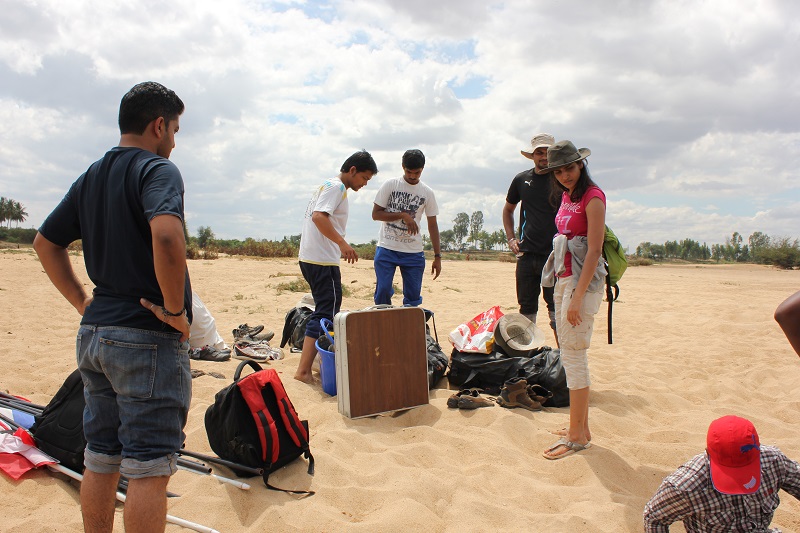
Next on target?
With a dedicated scout team to help match and vet the outdoor offerings, Thrillophilia will spend the coming time to strengthen its marketplace offerings with the vendors many of whom are still standalone operators relying on voice/sms for their business. The other efforts will go towards online campaigns over social media and repeat customers.
Competition in the space
To say Thrillophilia is the sole startup building a product in the travel space would be wrong. The experiential travel space is heating up with competition coming from Delhi based Travel Triangle and TLabs backed iExperience with GSF-500 Startups backed Tushky all adding their healthy mix of spin to the sector.
Hope you give Thrillophilia a spin for your next adventure holiday. I for one am definitely pinging Abhishek for recommendations for my kayaking holiday!
The secrets of succeeding in the Indian SME Market – the iWeb Story
ProductNation caught up with Akshay Shah, founder and COO of iWeb Technology Solutions to understand how they have been successful in serving the Indian SME market. Akshay says that the ability of their company to provide customizable business solutions at affordable prices is what has led to their success. Read on…
What was the main trigger to start the company?
The journey leading up to starting iWeb in 2005 is quite interesting. I come from a family of  chartered accountants. I was well on my way to pursue CA as my occupation, after my B.Com. While preparing for my CA intermediate exams, I had some free time. During this time, as a hobby, I started following the dot com boom in the US and developed an interest in how Internet was impacting businesses and people.
chartered accountants. I was well on my way to pursue CA as my occupation, after my B.Com. While preparing for my CA intermediate exams, I had some free time. During this time, as a hobby, I started following the dot com boom in the US and developed an interest in how Internet was impacting businesses and people.
Around that time, I happened to meet the CEO of a well accomplished IT business firm in one of the conferences. He heard about my interests and checked if I could help his company out in consulting with customers to deploy SAP solutions on a part time basis. The offer seemed interesting to me and I started to work part time. As I started interacting with customers and understanding the product, I very quickly realized that there was a huge disconnect between the features offered by the vendor and the price points at which they were being sold. I understood that there was an unmet need, particularly among the SMEs who wished to automate their business processes using IT.
This was the trigger for me to start thinking of starting iWeb. Along with Ketan Trivedi, my father’s friend, who also is a CA, we tried executing small projects for customers who we obtained from our contacts. The chemistry between Ketan and I seemed to work well. Also the initial work seemed to validate our thought process. Hence we started iWeb in 2005 formally to offer business solutions to customers.
The ERP products/solutions space is usually perceived as a mature and crowded marketplace. How have you managed to build a scalable and sustainable business in this area?
This perception holds good for VCs and investors who are looking at exits and non-linear growth in a relatively short time dimension. However, in the long term, this will be a very lucrative business, if you play it right. If you analyze the SME market in India today, you will notice that effectively only 5% of the market is automated. So, there is a large scope for many vendors, including the big players to go after the rest.
The issue is not about the availability of market, or access to it. The key challenge in addressing the reminder of the untapped market is to be able to provide customizable solutions at affordable price points. It is here that we believe we have been able to crack this puzzle.
Can you elaborate on how you solved the puzzle? What mistakes happened during the process and how did you overcome them?
From the beginning, we were pretty determined to build the entire ERP suite. In this zeal, we started to develop all the required capabilities of the product in parallel. However, we soon realized that during the startup phase, we could not manage development as well as customer acquisition with equal ease. We had bootstrapped ourselves and had no external capital infusion till last year. Hence we started selling only the CRM module to begin with, and over time, as we obtained a level of maturity in implementing it out for a few customers, we started paying attention to developing and selling the reminder of the modules.
As our customer base increased, our experience in understanding their requirements also increased. We realized that in the SME segment, business processes across enterprises would not be standardized. So, to be able to still get them to buy our solution and benefit from it, we had to build our product to be customizable to their requirements, and be affordable at the same time. These requirements led us to develop a powerful differentiating capability through our AgilewizTM framework that helps us deliver customized multi vertical and horizontal application solutions across different business lines with minimal amount of deployment time.
The beauty of this approach is that even a non-techie can use and configure a solution of his requirement. This approach helps us eliminate the requirement of highly skilled IT professionals needing to deploy solutions to customers. Customers benefit from it, since it reduces the cost of acquisition of our solution. In summary, over these years, we have evolved our product line and built sustainable business by focusing on providing customizable solutions at affordable costs to the SME segment.
What role have channels and partnerships played to help your sales?
You could say that the biggest asset for iWeb today is the partnerships we have built with other companies and individuals. They are a key factor in scaling the business, specifically for our country that has diverse customer requirements. It is also a relationship that we have built by valuing their domain skills. We are very transparent in all our dealings with partners. We strive to make our partners successful by sharing best practices of implementation through our network. As an example, one partner in Indore may reuse the artifacts developed by another partner elsewhere, reducing his time to deployment. This collaborative nature of relationship has helped us to a great extent in obtaining customer wins.
You have recently announced that you are diversifying as a software services provider, offering SaaS / PaaS type of solutions. What is the thinking behind this move?
The intent to diversify from being a pure product/solution company and enter into providing services via the SaaS / PaaS route is driven by two considerations. Firstly, we want to leverage the benefits of emerging technology and pass the benefits to our customers. Secondly and more importantly, moving to a Saas / PaaS based platform will help us provide better support to our existing set of customers. So you could look at this as our play to retain existing customers and build further to address their other needs.
On a different note, iWeb as a company and you as its founder have received multiple accolades internationally and at national level. What does this mean to you as a person, and how does this help your company?
Recognition from various forums such as the MIT TR35 or being selected as one of the top 50 emerging companies by NASSCOM certainly motivates self and the company in a big way. Firstly, it validates your belief and play, paving way to many business leads. Sales cycles will get much simpler because your prospect now sees you as being credible. Secondly, at a personal level, it is a huge confidence booster, and energizes you to go further your ideas to the next level. I would say that most of our largest breakthroughs in terms of customers or partners’ acquisition have happened on account of this.
What message would you like to give to potential product development entrepreneurs?
Off late, I see youngsters, specifically those graduating out of MBA colleges taking to entrepreneurship primarily because they see it as a cool factor or as a style statement. They do not seem to be prepared for the long haul. So, my advice to any entrepreneur thinking of getting into a software product business is to do so, only if he or she has a burning desire to solve a real problem – a problem which is causing him or her to have sleepless nights. One needs to understand that the journey of entrepreneurship is not a bed or roses, and you get to do everything else other than what you wanted to do. One should be mentally prepared to face these uncertainties and ambiguities – and be passionate about the idea, have the patience and perseverance to take it to a logical conclusion, come what may. Only then, it makes sense to go this route.
“Envision, Evangelise and Execute”: Connecting with Satyajeet from Cleartrip #PNHangout
We recently had a chance to catch up with Satyajeet Singh – head of Cleartrip’s mobile solutions, on Cleartrip and his take on the role of a product manager in Cleartrip, here’s what we learnt:
Cleartrip has been an early adopter of m-commerce in India. How have you been involved in taking Cleatrip’s mobile offerings from a MVP, to the product that it is today. How did you ensure it was scaled the right way and it grew?
A) Cleartrip launched its mobile site 3 years ago and was by definition, a minimum viable product: In the first version, users could only book a one-way ticket for one traveller and nothing more.
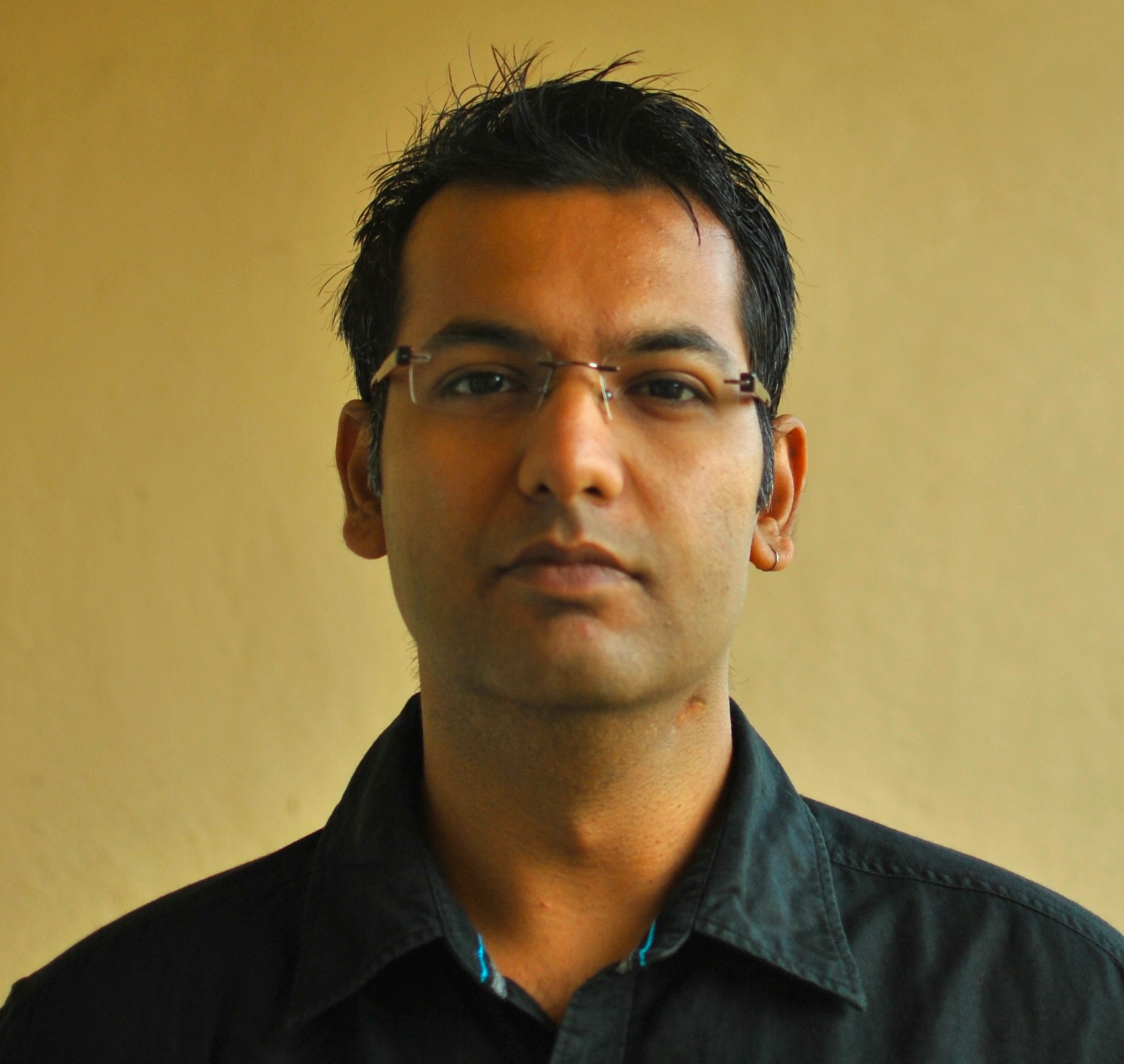 When we launched Cleartrip for mobiles, smartphones weren’t as popular as they are now and anything we earned wouldn’t have a large impact on our revenue. So we took small steps to make our mobile offerings market ready. We did not want to overwhelm the user with too many options, and we slowly scaled the product with more features as the market grew. Today we have apps for all major platforms and one of the most comprehensive mobile site, with mobile contributing over 25% of the traffic for us.
When we launched Cleartrip for mobiles, smartphones weren’t as popular as they are now and anything we earned wouldn’t have a large impact on our revenue. So we took small steps to make our mobile offerings market ready. We did not want to overwhelm the user with too many options, and we slowly scaled the product with more features as the market grew. Today we have apps for all major platforms and one of the most comprehensive mobile site, with mobile contributing over 25% of the traffic for us.
My first priority has always been to deliver the very best products we can, for our customers and it is very gratifying to see it getting recognized within the country as well as at international forums.
You’ve been in product management for over 8 years now, what do you think is the role of a product manager in an organization?
A) Envision, Evangelize, Execute, are the three key roles a product manager has to perform in any organization.
Envision
This means having a clear picture of the problem you are trying to solve, the solution and the strategy that will lead you there. It requires deep understanding of target users, the existing solutions and competitors in the market and a compelling case for why your solution will win over the existing alternatives.
Evangelize
An equally important aspect of my role is evangelizing your vision to your team. The more you focus on thisthe easier it’ll be to executeAnd once the team is convinced with your vision, you’ll be amazed to see the change it’ll bring to the output.
Execute
Remember the quote from The Social Network, “If you guys were the inventors of Facebook, you’d have invented Facebook.”
It is one of the most critical aspects of product management and means doing whatever it takes to ensure your product ships.
How do you organize your week and what are some of the tools you use to manage your work?
I try planning my week ahead by setting broad goals that can be achieved by the end of the week. My weekly goals could include tasks like calls, meetings, interviews, data analysis, and every little thing that I can foresee for that week. Planning for each day is usually impractical so I set a broad theme for each day and try and stick to it; for example, Marketing Monday’s is when I spend more time understanding impact of marketing campaigns, or Competition Wednesdays where I try to catch up on the competitor’s activities.
I also dedicate at least one day every two weeks, purely to plan future releases and to do a postmortem on our recent releases.
Some of the tools we use are, Basecamp for collaboration, Jira for tracking bugs, Evernote & Wunderlist to organize my work and Excel for everything else
How do you go about understanding your customers and his/her needs?
We get a lot of feedback from our users through emails, app reviews, complaints, tweets, Facebook comments and by talking to them directly. But while collecting this feedback, my focus is always to understand why users want a certain feature(instead of making a bucket list of what they want) or else you’ll end up building ‘faster horses’.
Analytics is the other very powerful source of understanding and predicting market needs and for fixing critical bugs.
It’s a mix of the two(feedback and analytics) that gives a good base for prioritizing releases. Making decisions by looking at just one side of the picture can sometimes prove fatal for products.
Product managers spend much of their time communicating ideas, plans, designs, and tasks to their teams. How do you ensure that it is done effectively?
You need to champion the three levels of communication between the teams.
Long term: By conveying your vision to the team and making sure that they are aware of the problem you are trying to solveis extremely important if you want a self motivated team. Even if they find it repetitive, you need to communicate it often, so that they don’t lose sight of it.
Short term: This includes communicating to all the people who will help in achieving this vision. It is mainly in a form of a product roadmap. You can share a broad yearly plan and a detailed quarterly plan that will enable everyone to plan accordingly. Make sure to keep all the stakeholders as involved/informed.
Immediate: This would include the day-to-day communication that is required for a smooth functioning of your roadmap. SCRUMs, feedback on designs, prioritizing bugs, discussing & closing blocker issues, reviewing marketing plans, communicating deviations, escalations, all fall under this category.
Q) Any tips for aspiring product managers?
Your products can only be as good as your relation with your teams, so invest time in building a long-term relation with them. By spending time with your team you build trust and respect, that will keep them equally excited & help you achieve your goals.
Editor’s Note: Every member of the product team is important. To succeed, a company must design, build, test and market the product effectively. That said, there is one role that is absolutely crucial to producing a good product, yet it is often the most misunderstood and underutilized of all the roles. This is the role of the product manager. #PNHangout is an ongoing series where we talk to Product Managers from various companies to understand what drives them, the tools they use, the products they work on, how they go about their day and the role they play in defining the products success.
If you have any feedback or questions that you would like answered in this series feel free to tweet to me: @akashj
Explara – The new journey begins…
There are some companies which start their business with a bang but can’t sustain their growth. Then there are other firms who seize market opportunities and add value to it. These companies succeed in the Indian Market and then get ready to go Global, including taking on the hard to penetrate Asian Markets. The following Interview is of a company that has reached a turning point and is ready to leave their footprint on the world markets. With new products in the making and a new brand name,they are ready to take Asia by storm. In discussion with Product Nation, Santosh Panda Founder Explara (formerly Ayojak) shares his strategy on the company’s plans ahead.
What was the vision with which you launched the company and how has the journey been so far?
We saw a need in the small to medium event organizers to streamline their businesses. These organizers did not have any technology input/help and we thought we could provide the same through this platform. We launched Ayojak in September 2008 and after adding ticketing and other features to the product we upgraded it the following year. In 2008 we started with listing of events with 4-5 customers. At that time event organizers were using handouts etc. to reach out to their customers and could not anticipate how many customers would come for the event. In 2009 our turnover was 1.5 Lakhs with 5 customers that went up to Rs.30 Lakhs in 2010, clearly establishing that there was a need in the market for the product which we were offering. In 2011 we clocked revenues of Rs. 1.69 crores and since then have been growing at over 75% year on year and today we handle over 300 events per month.
What was the competition like in 2009?
There was hardly any competition, the infrastructure was getting built, we had to call customers and tell them how to use it. There were people who sold only a particular event and nobody was looking at the platform as a one stop solution for all event needs.
Ayojak has gone in for a rebranding exercise; do tell us about the same. What prompted you to choose a different name?
Initially we were looking at solving a B to B problem, as in how to run an event, get details of people who are coming, collection of entry fee etc. We chose to address these problems for the event organizers. Therefore the focus was event organizers. But after some time the name which we had chosen – Ayojak, was perceived to be more of a name for an event management company and thus called for rebranding. Also since we were operating only in India, even then people had problems pronouncing the name clearly.
We thought, that if we need to target B to C customers and look international we should have a name which will be easy to pronounce and at the same time clearly be able to define to the customers what we were all about.
We want to be known as the go to site for any event organizer. Hence an opportunity to all event organizers and customer to Explore hence – Explara
Which other markets other than India are you looking at operating in and why?
We are looking at Singapore, South Africa, Philippines, to begin with, since we have already operated in a tough market like India, the learning has been immense and we feel that we will be able to apply the same in other developing markets, which are equally challenging. Our foray into international arena would be by end July.
What are the new features which you are planning to launch to supplement your existing product lines?
In our view the next two features could very well be the game changers. Any event organizer today still has two problems, Firstly, to identify who all have come for an event and who are yet to come. Through a new product – Entry Management, we will enable organizers through a smart phone to read the bar code/QR Code/NFC for every visitor attending the event, thus will at all times know the details of people who are in the event, yet to come or are outside the event.
Secondly, In India 30-40% of the attendees still come directly at the event. To help the organizers with this problem, we will give them an app based Box Office application which they can use to scan credit cards, debit cards etc, at the venue itself, thus ensuring that end moment gate collections are just as easy.
What advice would you give to product startups based on your early experience in the last few years?
Communicate clearly too all employees that you are there to stay, thereby keep reiterating to your employees the same message amplifying the fact that you are there for the long term.



